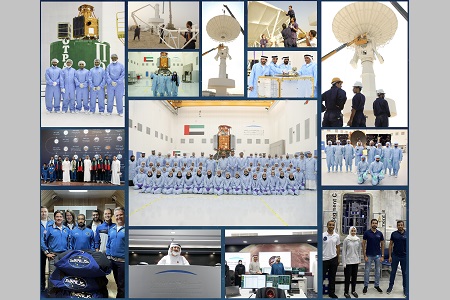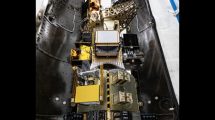 “Our exploration of space is only beginning: more missions are on the way. We will continue investing in building our space science, engineering, astronauts, and spacecraft. Big number of the stars in our night sky are named in Arabic – once again the Arabs can look to the stars.”
“Our exploration of space is only beginning: more missions are on the way. We will continue investing in building our space science, engineering, astronauts, and spacecraft. Big number of the stars in our night sky are named in Arabic – once again the Arabs can look to the stars.”
The above are the words of H.H. Sheikh Mohammed Bin Rashid Al Maktoum, Vice President and Prime Minister of the UAE and Ruler of Dubai, tweeted last year after the announcement of yet another seminal space exploration mission from the UAE.
For a nation as young as the UAE, the achievements that have been garnered in the field of space over the past 50 years has been nothing short of extraordinary – from launching multiple satellites into space, getting the first Emirati to space and even successfully sending the first Arab interplanetary mission to Mars, among others. The Mohammed Bin Rashid Space Centre (MBRSC) has been an integral part of these milestones, having helped achieve these in the span of a decade and a half.
Origins
The journey of MBRSC did not begin with the name that is currently synonymous with space exploration in the UAE. In 2006, the Emirates Institute for Advanced Science and Technology (EISAT) was established based on a government decree. The strategic initiative was aimed at inspiring scientific innovation and fostering technological advancement in the UAE, while promoting sustainable development and enhancing economic growth in the UAE and beyond.
The now-ubiquitous MBRSC nomenclature came into being in 2015, when H.H. Sheikh Mohammed issued a law establishing the Mohammed bin Rashid Space Centre, to support the country’s efforts in the space field and establish an integrated infrastructure for space-related technology, research and industries.
Early days
Over the past 16 years, MBRSC has gone on to undertake multiple projects that have catapulted it into one of the most active space centres in the world. Within just 3 years of its establishment, the Centre was able to send its first Earth-observation satellite, the DubaiSat-1 to space. The satellite was built by Emirati engineers in collaboration South Korea’s Satrec Initiative. Images from DubaiSat-1 have been used to monitor the overall development of mega projects like the Palm Islands and Al Maktoum International Airport in Dubai. Satellite imagery from the satellite were also used to monitor relief efforts during 2011 earthquake and tsunami in Japan.
Following the success of DubaiSat-1, the second satellite, DubaiSat-2 was launched in 2013. The satellite was built with a predominantly Emirati team of engineers and played a major scientific role in the knowledge development journey of MBRSC and its engineers, incorporating innovative specifications and technology that surpassed the capabilities of its predecessor.
The following year, in a first of its kind announcement, UAE announced its first inter-planetary mission to Mars. The mission subsequently came to be known as the Emirates Mars Mission and the Hope Probe is synonymous with the aspirations and inspirations of the country. The mission launched to space in 2020, and reached the orbit of Mars in 2021, where it has since then delivered some never-before-seen data about the weather and phenomenon on the Red Planet.
In 2017, MBRSC collaborated with educational institutions, primarily the American University of Sharjah, as part of the sustainable space science knowledge transfer programme and launched the UAE’s first nanosatellite – the Nayif-1. The projects heralded a new era at the Centre, allowing Emirati engineering students hands-on experience in the design, manufacture, integration, installation and operation of small satellites. MBRSC has explored a number of educational programmes since then, conducting space explorer camps, school tours, space project competitions, research experience for undergraduates and research grant programmes and the Emirates Mars Mission teacher ambassador programme, among others. All these outreach programmes have spiked the interest in STEM subjects among the youth and created a growing base of science-led academia in the country.












Add Comment